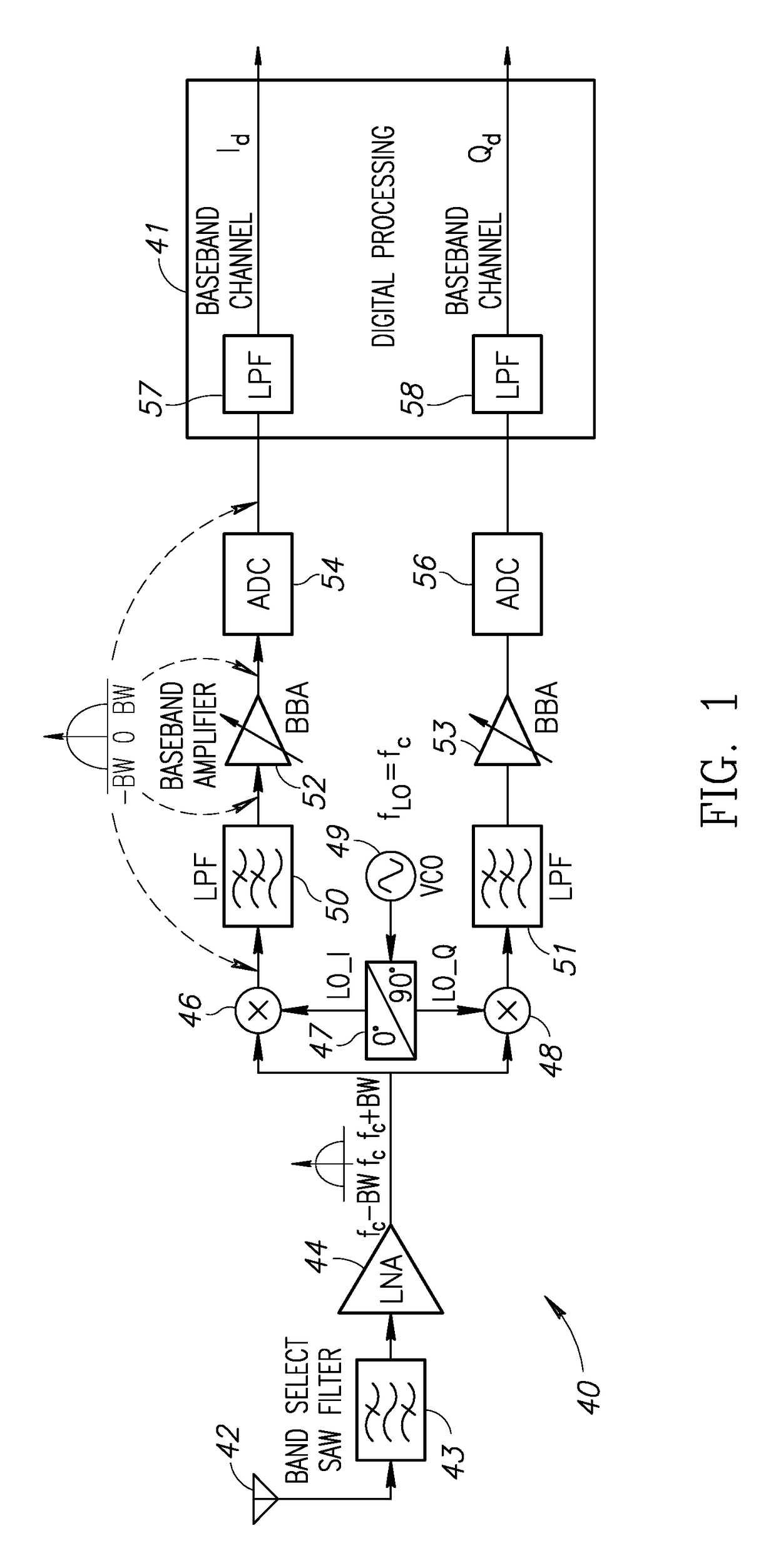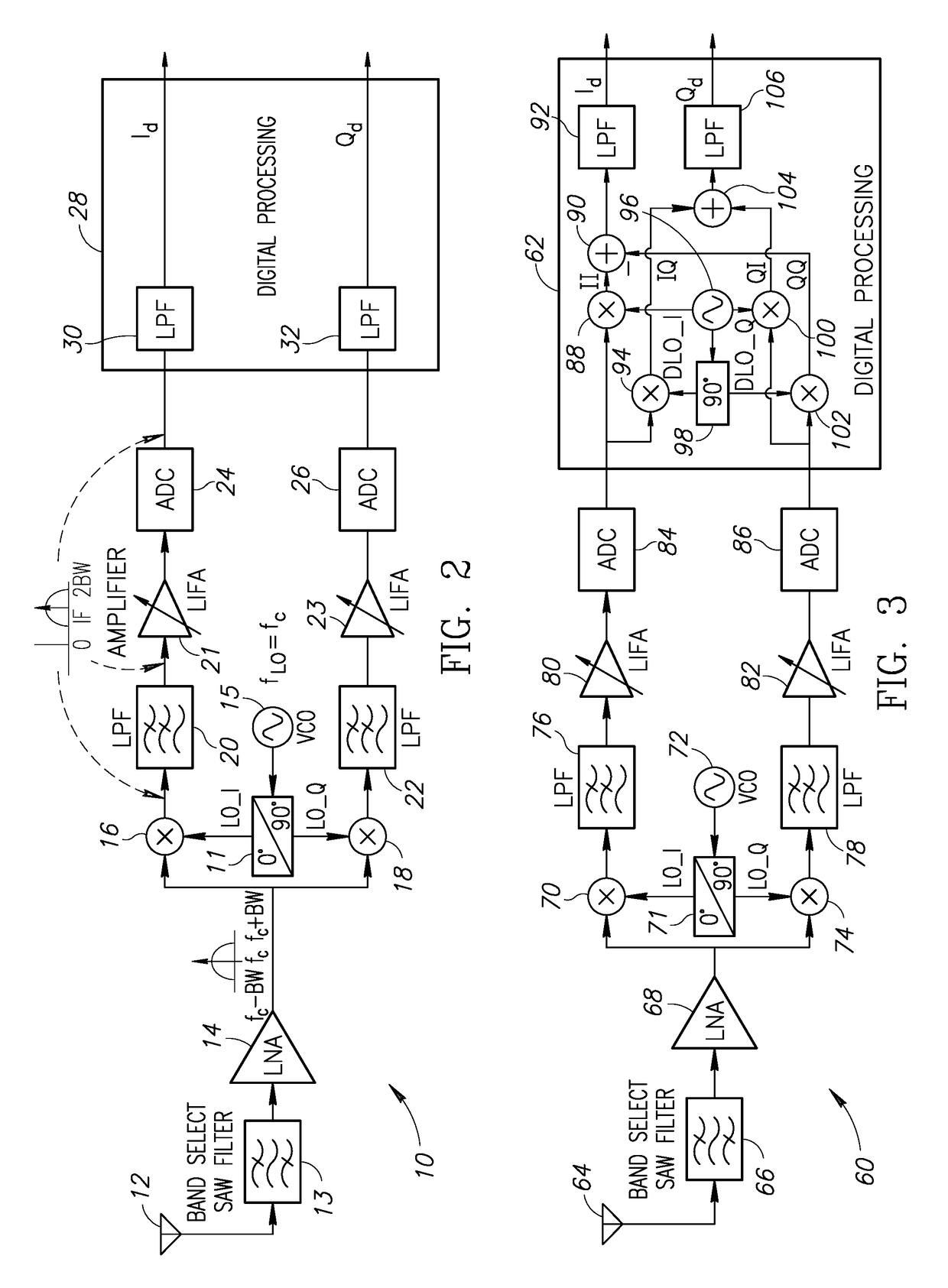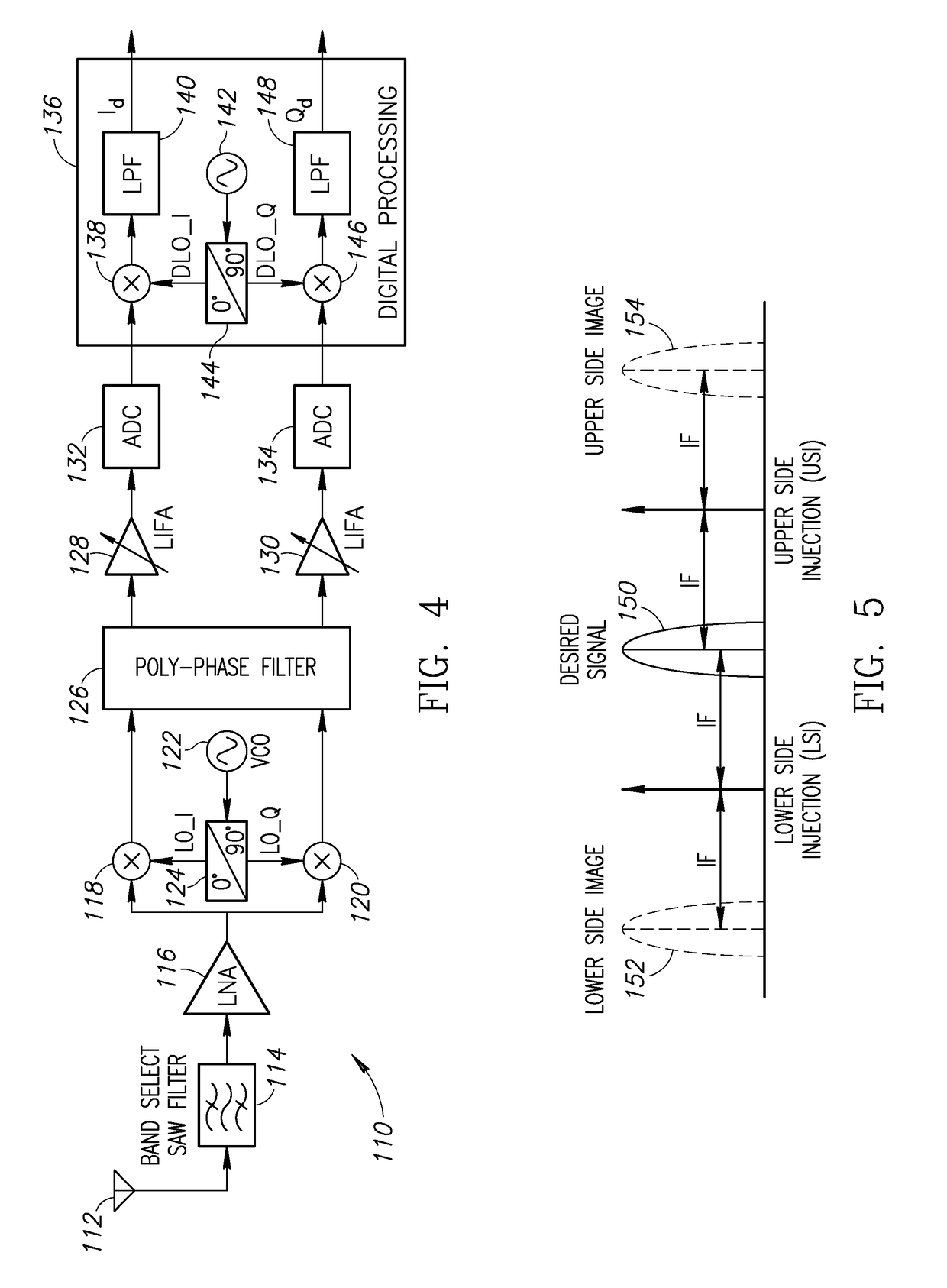Apparatus and method of detection of image interference in a radio frequency receiver
a radio frequency receiver and image interference technology, applied in the field of radio frequency communication circuits, can solve the problems of signal strength, sub>im/sub>, signal variability, etc., and achieve the effect of reducing power consumption considerably
- Summary
- Abstract
- Description
- Claims
- Application Information
AI Technical Summary
Benefits of technology
Problems solved by technology
Method used
Image
Examples
Embodiment Construction
Zero-IF (ZIF) Radio Receiver Architecture
[0038]A high level schematic diagram illustrating an example zero-IF receiver is shown in FIG. 1. The zero-IF (ZIF) receiver, generally referenced 40, comprises antenna 42, band pass filter (BPF) 43, low noise amplifier (LNA) 44, voltage controlled oscillator (VCO) 49, local oscillator (LO) I / Q block 47, I branch mixer 46, low pass filter (LPF) 50, baseband amplifier (BBA) 52, analog to digital converter (ADC) 54, Q branch mixer 48, LPF 51, BBA 53, and ADC 56. Digital processing block 41 includes finite impulse response (FIR) LPF 57 that filters the I baseband signal and FIR LPF 58 that filters the Q baseband signal.
[0039]A zero-IF (ZIF) receiver, also known as a direct-conversion receiver (DCR), homodyne, or synchrodyne, is a radio receiver design that demodulates the incoming radio signal using synchronous detection driven by a local oscillator whose frequency is identical to, or very close to the carrier frequency of the intended signal. T...
PUM
 Login to View More
Login to View More Abstract
Description
Claims
Application Information
 Login to View More
Login to View More - R&D
- Intellectual Property
- Life Sciences
- Materials
- Tech Scout
- Unparalleled Data Quality
- Higher Quality Content
- 60% Fewer Hallucinations
Browse by: Latest US Patents, China's latest patents, Technical Efficacy Thesaurus, Application Domain, Technology Topic, Popular Technical Reports.
© 2025 PatSnap. All rights reserved.Legal|Privacy policy|Modern Slavery Act Transparency Statement|Sitemap|About US| Contact US: help@patsnap.com



